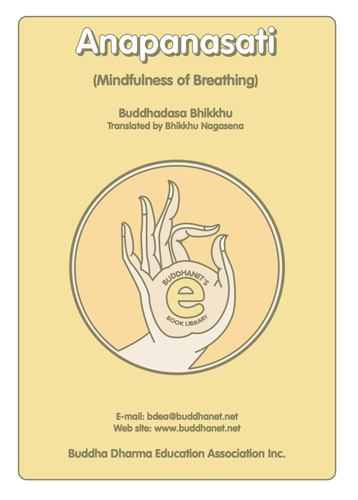| |
 Image search results - "Breathing" Image search results - "Breathing" |

anapanasati.pdfAnapanasati - Mindfulness of Breathing12911 viewsFor the first time in the English language a comprehensive manual of Buddhist meditation known as anapanasati (the development of mindfulness of breathing) is available. Although this manual is primarily intended for the benefit of monks, it will greatly assist laymen, too, who wish to undertake a course of meditation but who do not have the guidance of a teacher. Originally published in Thai, this manual is one of the major works of the Ven. Buddhadsa Bhikkhu and delivered in 1959 in the form of a series of lectures to monks of Suanmokkha Monastery, Chaiya, Thailand. Ven. Buddhadasa Bhikkhu, a major voice in the Buddhist world, is an accepted master of Buddhist meditation. In constructive positive language, the manual guides the meditator through the 16 steps of anapanasati.
|
|

File06_(AM)_Contemplating_breathing.mp3Contemplating Breathing1203 viewsPatrick Kearney's Vipassana Retreat Talk at Bodhi Tree Monastery (2009)
This morning we experiment with breathing as our meditation object. We learn to experience breathing as air element (vayo dhatu) — the movements within the body associated with inhalation and exhalation — and cultivate a sense of detail and precision in tracking these movements.
|
|

fourelements.pdfMindfulness of Breathing and the Four Elements Meditation5888 viewsVen. Pa-Auk Sayadaw
This book contains the instructions for mindfulness-of-breathing meditation, the four-elements meditation, and the subsequent detailed discernment of materiality. The last section of this book covers some of the relevant theory. Several pages have been added by the Sayadaw covering the balancing of the five controlling faculties and seven factors of enlightenment. There is also the addition of his explanation of the difference between the experience of Nibbana and the experience of life.
|
|
|
|

 Social Bookmarks Social Bookmarks |
|
|
|
|
|
